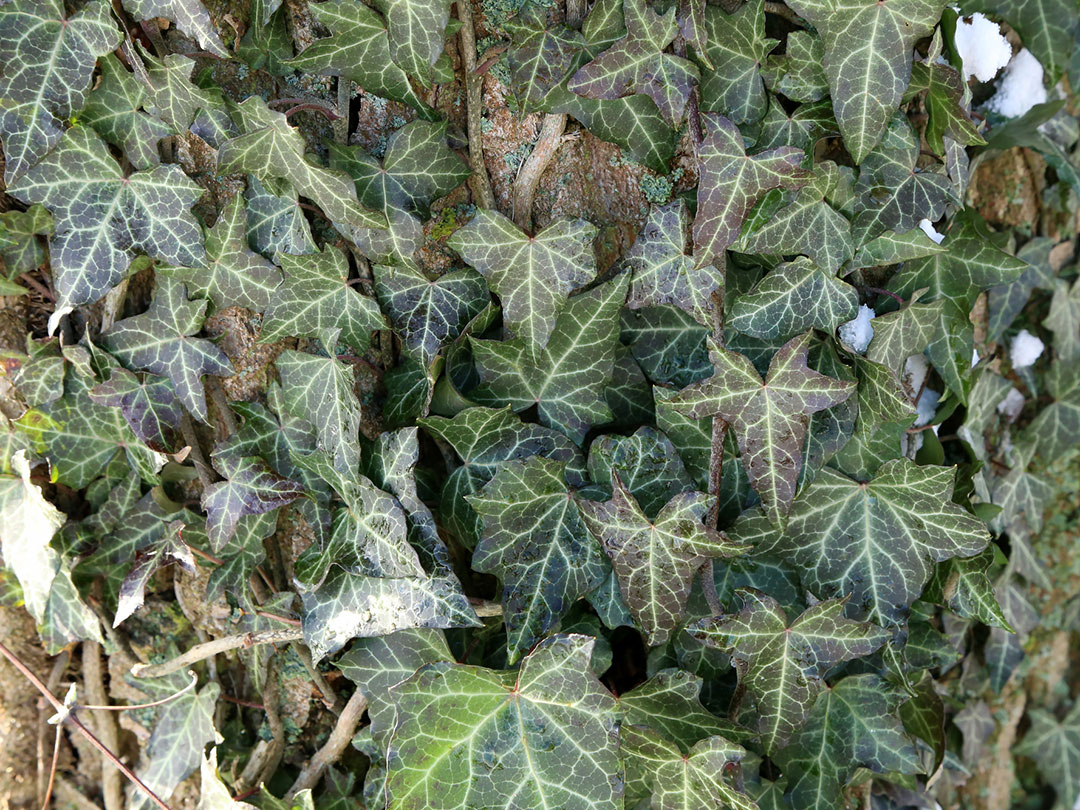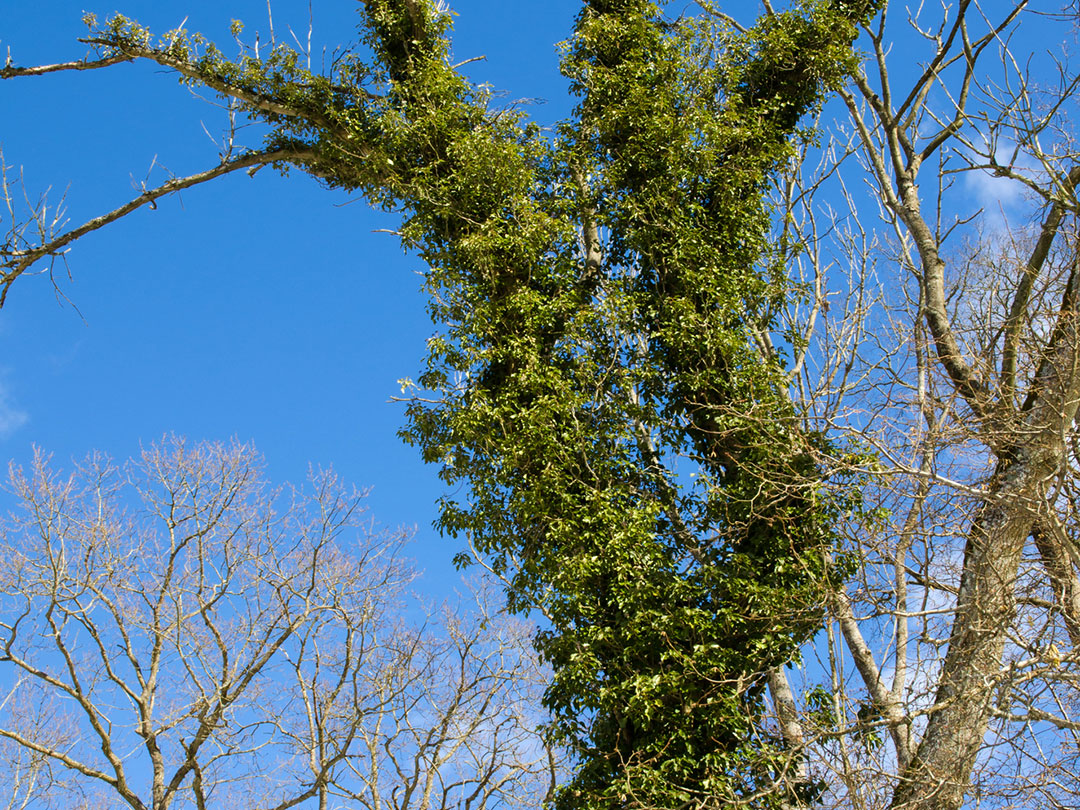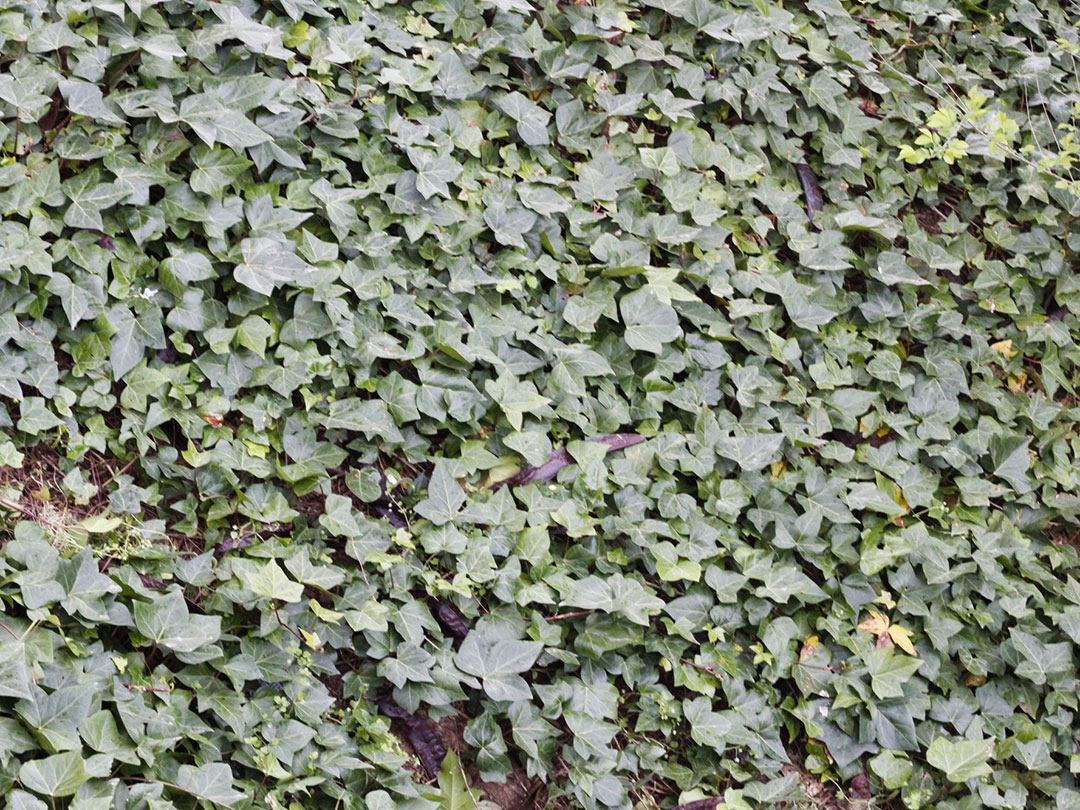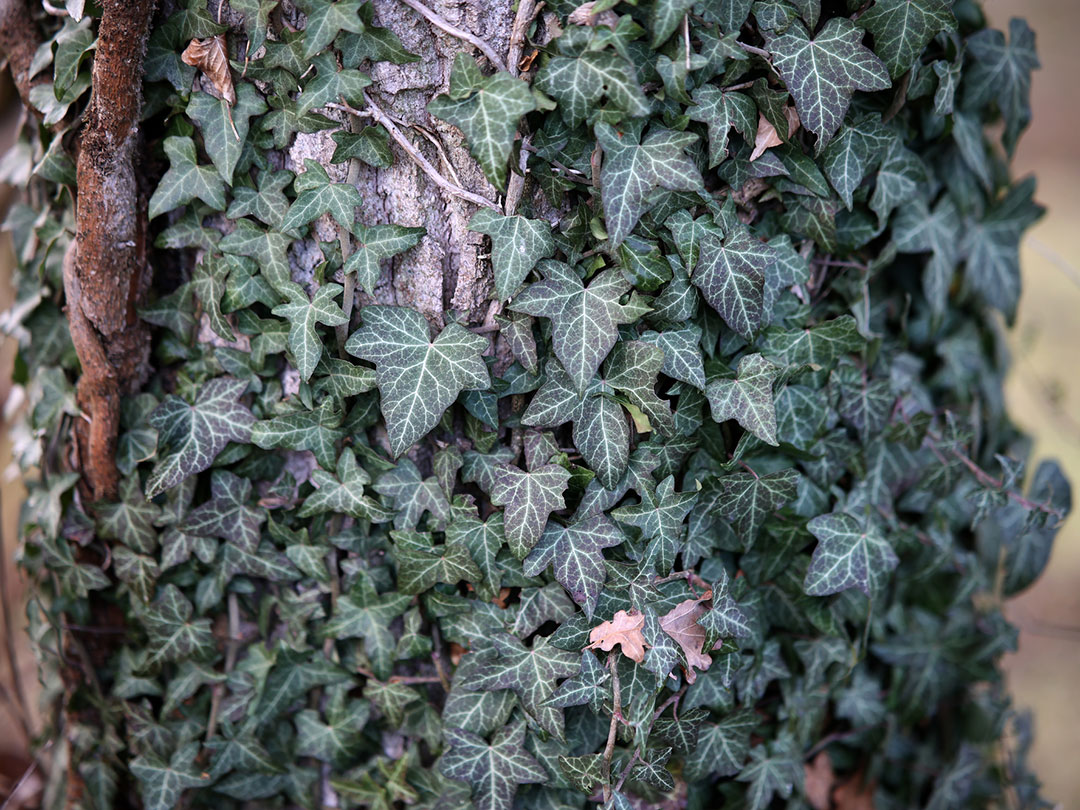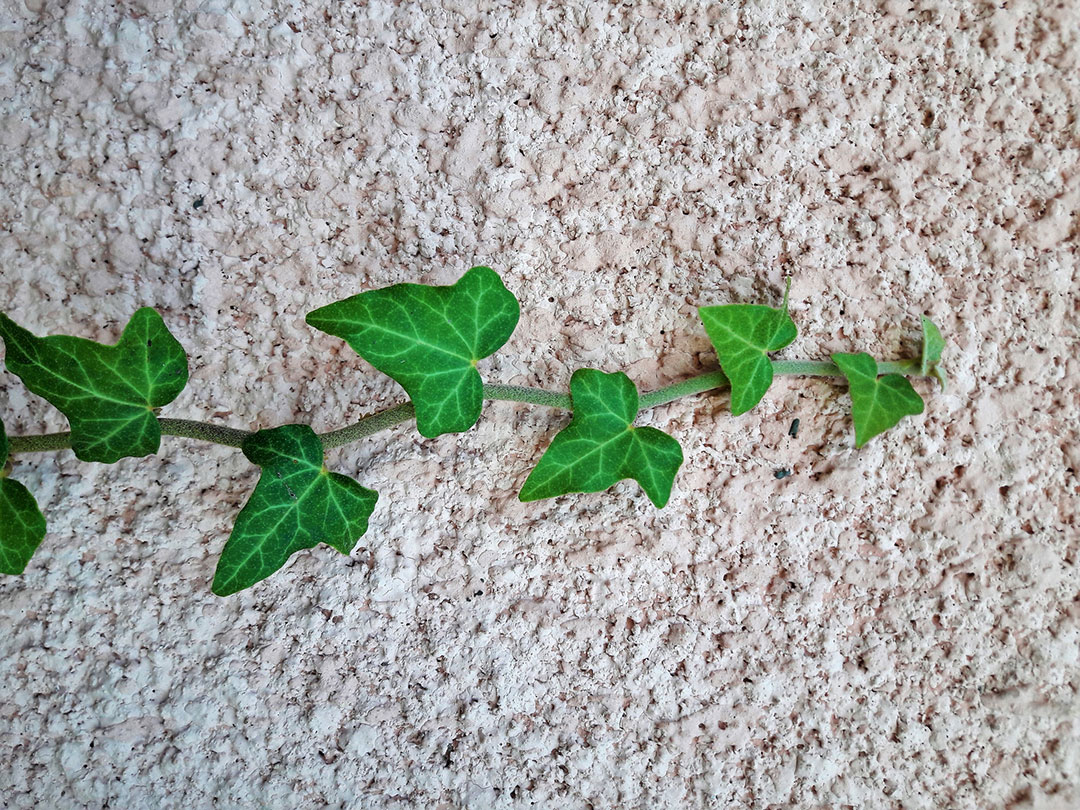Invasive Plant Details
Back to Full ListEnglish Ivy
Latin Name: Hedera helix
Identification
Flower: Small, greenish-yellow, umbrella-like clusters that bloom in late summer to fall. Flowers only appear in its mature growth stage and production is reliant on sufficient sunlight to transition from juvenile to mature growth stage.
Leaves: Dark green, glossy, and lobed with a leathery texture, evergreen.
Stems: Long, climbing or creeping, with aerial rootlets that allow it to cling to surfaces.
Growing Environment: Prefers shaded, moist soils in woodlands, gardens, and urban areas.
Growth Habit: A vigorous, evergreen climbing vine that can grow up to 30 meters long. It spreads by creeping or climbing stems that root at the nodes. In situ, English ivy forms dense mats or climbs up trees and buildings, often covering large areas and smothering vegetation.
Impacts on Environment
Impacts: Highly invasive, particularly in pacific northwest woodlands and urban areas, where it can choke out native plants and trees.

